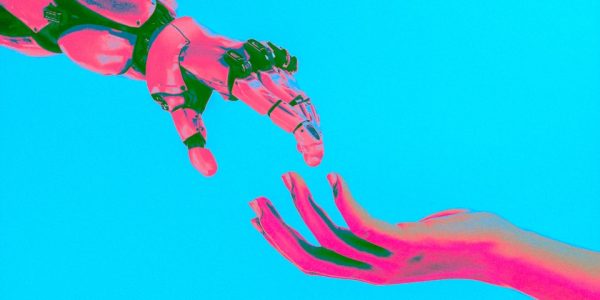Age of Adaptability: The Future of Skills
Welcome to ManpowerGroup’s monthly series on the future of work. I’m Alexandra Levit, resident workforce futurist, and each month moving forward, we’ll be talking about a different aspect of where the workforce is headed and what you need to do prepared based on our 2024 Trends Report, The Age of Adaptability. First up is everyone’s favorite topic to speculate about – AI!
Within the next five years, we anticipate that the democratization of AI-based technology will lead to greater accessibility across the organization and that employees at all levels will be empowered to integrate AI into relevant job tasks as they see fit.
As we discussed in “The Age of Adaptability” report, businesses anticipate a 23% churn in jobs over the next five years between the creation of new roles and the reduction of others. But, because more cross-industry examples will emerge detailing how best to deploy AI, organizations won’t be as mystified by its presence and impact on the workforce. AI will increasingly be seen as a force for good!
One might imagine that a futurist has extreme ideas about the future of AI. And while it’s true that I believe AI-based technologies will be true partners in work moving forward and will play a role in the development of the metaverse and immersive work environments that Manpower recently researched, I don’t think the AI of science fiction is likely to come to fruition anytime soon. We are still far from achieving what’s called artificial general intelligence, which is a form of AI that thinks and creates on its own, essentially surpassing human abilities in all types of work.
Since AI-based technologies are not in a position to take over all human jobs as is still feared, this piece will focus on the technologies that are available now – namely generative AI applications and talent intelligence applications – and the role they can realistically play in the workforce in the coming years.
Generative AI Has Legs, But It’s Not the End
Generative AI is capable of generating text, images, or other media by learning the patterns and structure of input training data and then generating new data that has similar characteristics. A workforce-related example involves the development of sophisticated digital assistants that can use an existing arsenal of HR information to respond more accurately to online employee queries, even if they weren’t trained on those exact questions.
The technology has been introduced to the market at a very rapid pace. ChatGPT was released in November of 2022, and then shortly thereafter, OpenAI released a large language model called GPT-4 that was a measurable improvement over the original ChatGPT. Microsoft, Google, and other big technology players are quickly getting in on the action.
But generative AI is not necessarily the massive breakthrough people think it is. Its release is more the result of a logical linear progression, as we’ve had smart chatbots for quite some time now. Although there has been significant media interest in ChatGPT, it’s not substantially different from what came before. In its current state, generative AI still requires a great deal of human oversight and regulation, and the majority of organizations are just figuring out how to use it effectively for various business purposes. So, if you haven’t cracked the code yet, you shouldn’t lose sleep over it. You’re not behind.
In the Workforce Arena, Many Will Start with Talent Intelligence
The most immediate opportunity for workforce leaders to integrate AI-based technologies might not even relate to generative AI specifically. Rather, AI-driven technology called talent intelligence is already in the marketplace. Talent intelligence, which I discuss at length in my 2023 book “Deep Talent,” harnesses deep learning to assess skills adjacency (that is, if you are good at skill A, you will also be good at skill B) and open non-traditional pathways for candidates who don’t have the experience with the exact job needed but do have the capabilities required.
The technology also helps leaders determine current organizational skills and future needs by taking into account a global dataset of standardized job descriptions and requirements. It offers us a pathway to redeploy workers more flexibly in times of disruption and to redesign jobs in keeping with digital transformation.
Speaking of job redesign, organizations are increasingly creating new job categories for the oversight and management of AI-based machine partners and the integration of human and machine labor. This redistribution of effort keeps “humans in the loop” to provide creativity and strategy as digital components focus on the task-oriented, routine, and repeatable work at which machines are still best. In the last five years, we’ve also seen the launch of “superjobs,” which are a cross-functional mashup of components from traditionally separate jobs.
An example is a patient care architect, which combines the specialties of traditional case management and healthcare data analysis to provide more targeted, effective services to individuals in a health setting. We can deploy talent intelligence to source for these superjobs, many of which have never been staffed before.
As you consider how AI will impact your workforce in the next several years, you’ll be less overwhelmed if you try not to get ahead of yourself. By exploring the implementation of generative AI and talent intelligence with pilot programs in the HR function, you won’t get ahead of yourself and will be in an excellent position to demonstrate business results that gain gradual but solid organizational buy-in.
